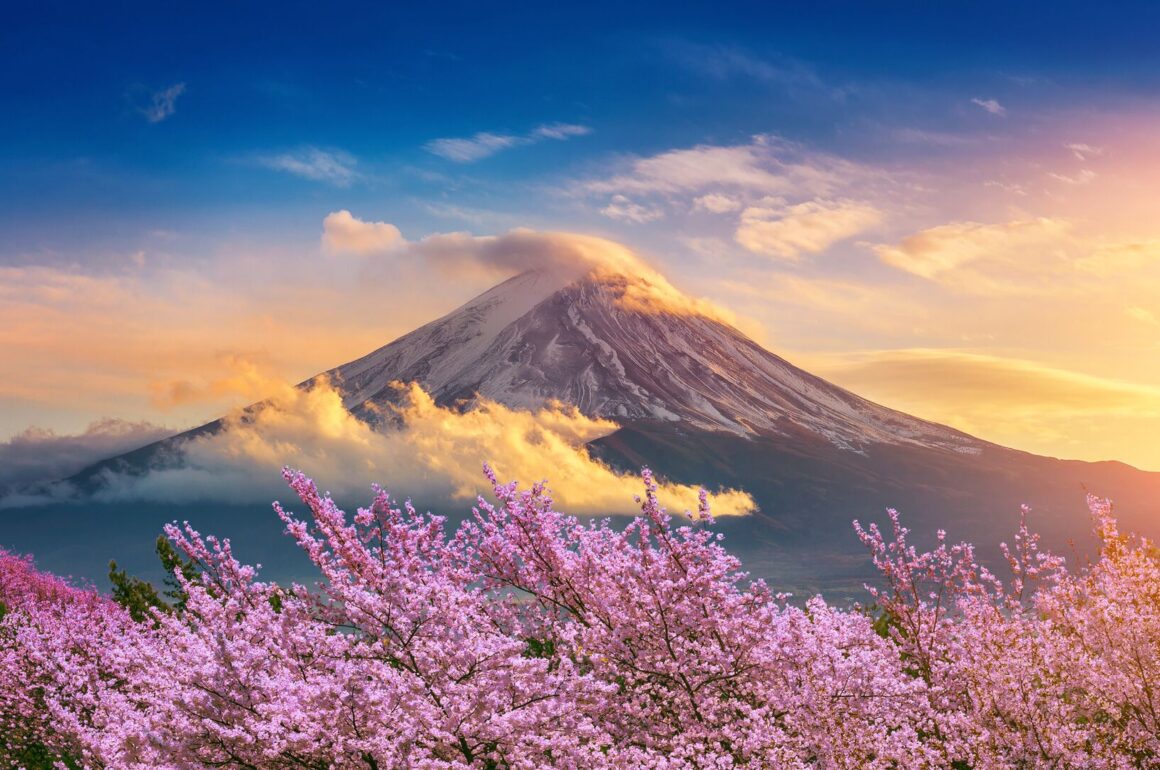Cherry Blossoms Near Peak Bloom in Washington, D.C., and Japan Embraces AI for Conservation
Cherry blossom season is one of the most anticipated natural events of the year, drawing millions of visitors to witness the spectacular bloom. In both Washington, D.C., and Japan, the delicate pink and white flowers signal the arrival of spring. Recent updates from the National Park Service (NPS) and Japanese conservationists provide insights into this year’s bloom and innovative efforts to preserve these iconic trees.
Washington, D.C.: Cherry Blossoms Near Peak Bloom
According to the National Park Service, the cherry blossoms along the Tidal Basin in Washington, D.C., have reached Stage 5 of their bloom cycle, known as the “Puffy Blossoms” phase. This means that peak bloom is just one stage away. The cherry trees’ bloom progression depends largely on weather conditions, with factors such as temperature and rainfall influencing the timing.
Historically, cherry blossoms in Washington, D.C., reach peak bloom between late March and early April. In 2023, peak bloom arrived earlier than usual, occurring on March 17. The six stages of cherry blossom development, as tracked by the NPS, help predict when the iconic display will reach its full glory, allowing visitors to plan their trips accordingly.
With peak bloom fast approaching, visitors are flocking to the Tidal Basin to witness the transformation. However, unpredictable weather patterns remain a concern. Sudden temperature drops or strong winds could shorten the bloom duration, making it all the more essential for visitors to catch the blossoms at their prime.
Japan’s Cherry Blossoms Begin Blooming in Kochi
Meanwhile, in Japan, the cherry blossom season has officially begun in Kochi, a city on the western island of Shikoku. According to the Kyodo News Agency, Kochi recorded the earliest bloom of the Somei Yoshino variety for the second consecutive year. This variety is the most common type of cherry tree in Japan, admired for its soft pink petals and widespread presence across the country.
Japan’s cherry blossom season is a highly anticipated event, deeply rooted in cultural traditions such as “hanami,” or flower viewing. Families, friends, and coworkers gather under the blooming trees for picnics, enjoying the fleeting beauty of the blossoms before they fall.
While cherry blossoms symbolize renewal and the transient nature of life, concerns about the longevity of these trees have been growing. Many cherry trees, particularly those planted during Japan’s postwar reconstruction, are aging and require careful conservation efforts to ensure they continue to thrive for future generations.
Japan’s AI-Powered Initiative for Cherry Tree Conservation
In a groundbreaking initiative, Kirin Brewery has launched an AI-powered service aimed at preserving Japan’s beloved cherry trees. The new ‘Sakura AI Camera’ allows users to photograph cherry trees using their smartphones, after which AI analyzes the images to determine the tree’s age and overall health.
The free web-based tool guides users on how to take proper photographs, focusing on trunk thickness and shape. Based on this analysis, the AI assigns a vitality rating on a five-level scale. This data is then shared with local governments, helping them identify which trees require maintenance, such as pruning or pest control.
Kirin Brewery introduced this service ahead of Japan’s 2025 cherry blossom season, hoping it will encourage public participation in conservation efforts. With many of Japan’s cherry trees aging, this initiative is expected to play a vital role in preserving them for future generations.
Local governments in Japan often face staff and budget limitations, making it challenging to monitor the condition of cherry trees effectively. Kirin’s AI-powered tool provides a simple yet effective way for the public to contribute to conservation. By leveraging modern technology, Japan is taking a proactive approach to safeguarding one of its most cherished natural symbols.
The Significance of Cherry Blossoms Worldwide
Cherry blossoms have long been celebrated for their beauty and cultural significance. In Washington, D.C., the trees were a gift from Japan in 1912, symbolizing friendship between the two nations. The annual National Cherry Blossom Festival attracts thousands of tourists, providing a major boost to the local economy.
Similarly, in Japan, cherry blossoms hold deep cultural meaning, often associated with themes of impermanence and renewal. The tradition of hanami dates back centuries, emphasizing the appreciation of nature’s fleeting beauty.
With climate change affecting blooming patterns worldwide, researchers continue to study how rising temperatures influence the timing and health of cherry trees. Conservation efforts, such as those led by Kirin in Japan, will be essential in ensuring that future generations can continue to enjoy the breathtaking sight of cherry blossoms in full bloom.
Conclusion
As cherry blossom season unfolds in different parts of the world, enthusiasts eagerly await peak bloom in Washington, D.C., while Japan embraces innovative technology to preserve its cherished trees. Whether through in-person hanami celebrations or AI-driven conservation efforts, cherry blossoms remain a timeless symbol of beauty, renewal, and cultural heritage.
With Washington’s trees nearing full bloom and Japan leading the way in preservation efforts, this season serves as a reminder of the delicate yet enduring connection between nature and human appreciation. For those lucky enough to witness the bloom, it is an opportunity to savor a moment of fleeting beauty before the petals fall, marking the arrival of spring once again.
